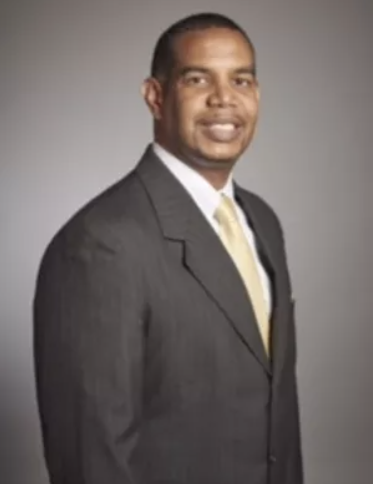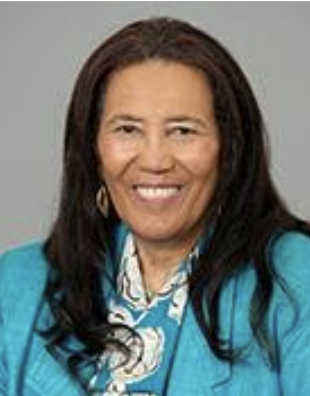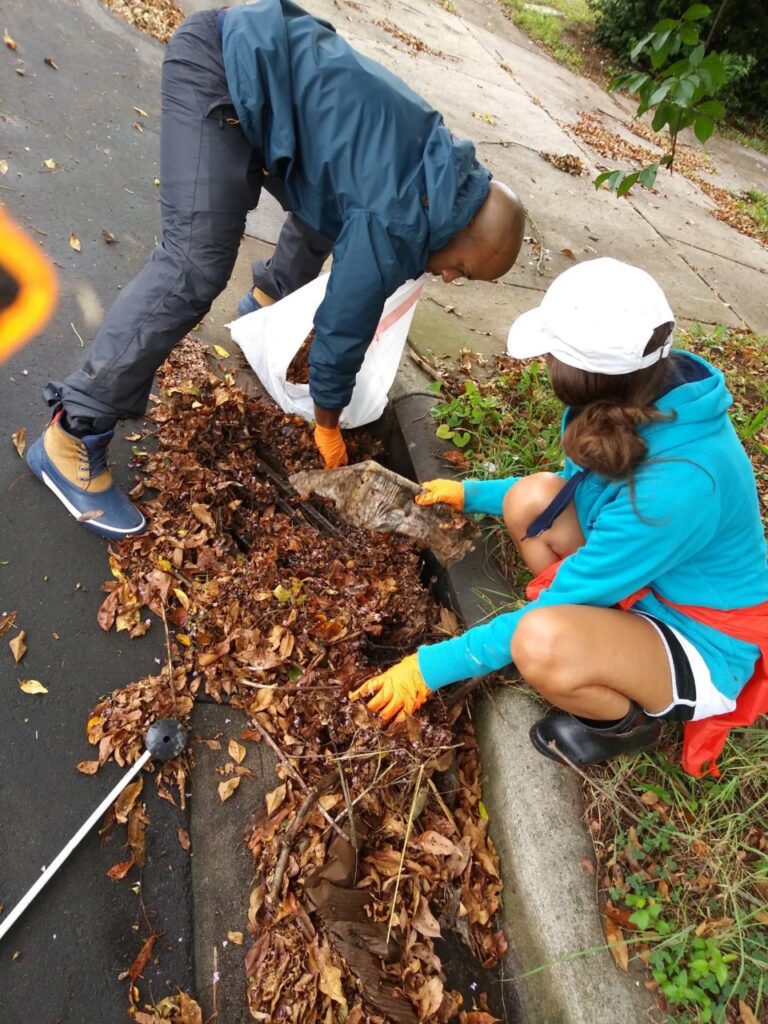Above: Ryan Bowen, Crystal Alford and Yvonne Adams participate in a stormwater cleanup and storm drain labeling event organized by Our Voice, Our Water in Historic Washington Heights in Charlotte. The North Carolina Water Resources Research Institute, a sister program of North Carolina Sea Grant, co-sponsored the project.
By Cameron Miller

Bryan Patterson, PhD, chairs the Public Leadership Studies concentration at Johnson C. Smith University in Charlotte.
Community groups in several Charlotte neighborhoods have joined Johnson C. Smith University’s Bryan Patterson to tackle long-term stormwater issues. Partners in the Our Voice, Our Water project include residents in Lincoln Heights, Washington Heights and Northwood Estates, along with the Regional Stormwater Partnership of the Carolinas and the Rising Solutions engineering consulting firm.
With funding from the North Carolina Water Resources Research Institute and the North Carolina Stormwater Consortium, the team is building upon earlier annual litter roundups sponsored by the university and surrounding communities along the historical west-end of the City of Charlotte.
“Johnson C. Smith historically has meaningful outreach to the members of this community, engaging the community and doing various community service activities,” says Patterson, who is chair of the university’s Public Leadership Studies concentration.
But the cleanups alone could be considered a temporary solution to a much more serious, complex problem — a temporary fix for a systemic issue impacting the quality of life in these neighborhoods. Through Our Voice, Our Water, the residents are gaining new perceptions and solutions.
Rather than clean-ups on particular streets, this project has added education elements, along with community participation in the research, notes Thelma Byers-Bailey, president of the Lincoln Heights Neighborhood Association.
“Now we are focusing on educating our entire neighborhood,” she says. In particular, an ongoing effort is to explain how trash and debris get into the waterways: via stormwater drains.
“I do not think we know how damaging the debris will be flowing into those drains. We need to know why.”
Byers-Bailey has known the “creek at the bottom of the hill” since she was a child growing up in Lincoln Heights. As an adult, she came to realize how far the creek winds through the neighborhood and that is runs near an elementary school.

Thelma Byers-Bailey is a Lincoln Heights community leader and key member of the Our Voice, Our Water project.
Through Our Voice, Our Water, she is eager to help not only her immediate neighbors, but also those in other communities that make up the Historic West End Neighborhood Association to be more conscious of the nearby waterways, and the impacts of litter and stormwater.
Project partners acknowledge the challenges of working with communities facing a multitude of pressing issues, such as affordable housing. “I think the real unique piece of it is really understanding how all of these things impact one another, but may not necessarily directly coincide in your everyday activities or your everyday thoughts,” Patterson explains.
What is Our Voice, Our Water doing to change these perceptions? A key strategy lies in empowering these neighborhoods to have control over their conditions through the program’s partnerships.
“I think that that’s the major place where these targeted communities have felt that they were not heard at all,” Patterson adds. Getting a dialogue started has been key, he says, “reaching out to the right people in the right places.” For example, Making Charlotte Beautiful is among the partners.
Also, the lessons learned can be shared widely through the Regional Stormwater Partnership of the Carolinas, a nonprofit that includes 22 municipal and city entities who share common goals within stormwater management.
As the project started, not all the residents and neighborhoods shared the same concerns about and perceptions of stormwater issues. This is where an analysis of calls to the city’s 3-1-1 hotline, along with surveys Patterson and his research partners conducted, came into play.
The team sent out several surveys to gauge the communities’ perception of stormwater issues. Groups surveyed included participants in events hosted by program partners, as well as a random sampling of people in the neighborhoods of focus, to get a general idea of their knowledge of the links between litter and stormwater.
Using data collected from the 3-1-1 calls, team member Daisha Williams, filtered out calls unrelated to stormwater and pollution. She then categorized and quantified the remaining calls to provide an overview of the areas of most concern in each neighborhood. Williams worked on the project through N.C. AmeriCorps, and now serves as environmental justice manager for CleanAIRE N.C.
The data served as the basis for the “3-1-1 Have a Voice” workshop that “connected community members to municipal entities in concerned stormwater areas, in order to establish a sustainable pathway of communication and connection,” Williams notes.
Regina Guyer of Rising Solutions agrees. “It is meaningful to know that citizens and Charlotte Mecklenburg staff have communicated within the ‘3-1-1 Having a Voice Workshop’ and will seek continued communications to address issues and interest within these communities.”
One of the first steps in the partners’ action plan has been indexing streams running through the communities, to assess overall water quality. For each neighborhood, one site is selected upstream, two within the neighborhood and one downstream. Each site has been chosen based on visibility and significance to the community.
Through 100-foot stretches, first-glance and count assessments, the following factors were scored and totaled for each neighborhood.
After collecting the indexing data, the team has hosted events to foster community engagement. These have included cleanups, storm drain marking and workshops designed to empower citizens to be vocal about their concerns regarding stormwater, with the materials for each coming from the Stormwater Consortium-provided grant.

The project is getting attention beyond the city and state. Initial research results have been presented at the Southeast Stormwater Association’s (SESWA) 16th Annual Regional Stormwater Conference and the American Public Works Association – North Carolina (APWA-NC) Conference.
Within Charlotte’s Historic West End neighborhoods, educational materials have been a key component of Our Voice, Our Water’s strategies. Thanks to the WRRI funding, a website is now dedicated to the program and teaching the community about stormwater issues that affect them. Noting that many people within the targeted community do not have regular access to technology for a myriad of reasons, community leaders also shared printed materials.
In Fall 2021, Our Voice, Our Water continues its engagement with university students, city and county leaders, and citizens to build community trust and understanding of the community’s storm water concerns, including outreach for K-12 students.
Guyer notes that ongoing citizen engagement will help keep tabs on illegal dumping “hot spots” and encourage further involvement with environmental issues tailored to them. “Each of the three neighborhoods received neighborhood grants to encourage continued citizen involvement within environmental and stormwater issues, tailored to their individual neighborhood’s interest,” she says.
Thelma Byers-Bailey notes that the work is expanding to include residents whose primary languages are not English. She and other partners are hoping all the neighbors will think about those storm drains right in front of or near their homes.
“Water quality is important. We need to be involved,” she notes.
more about the North Carolina Water Resources Research Institute